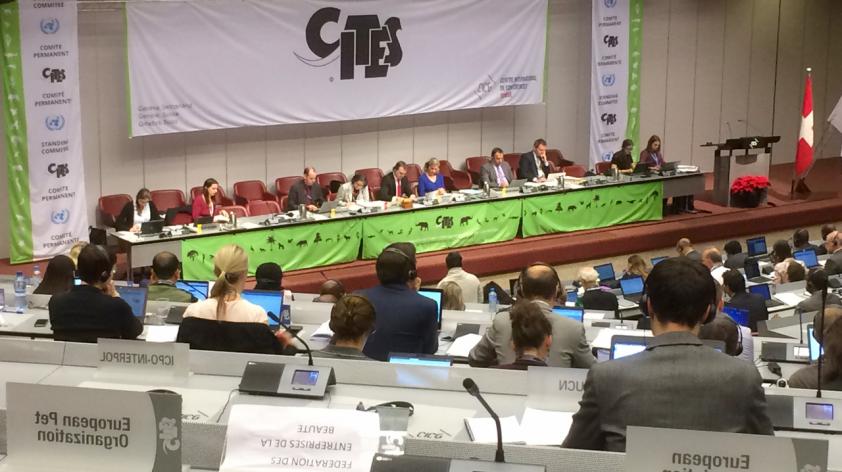
CITES as an international stage
San Diego Zoo Global addresses the illegal trade in wildlife
San Diego Zoo Global’s mission plainly states that we are committed to saving species worldwide. To do this, we must take on some of the most pressing “big picture” threats to biodiversity, which are often worldwide in nature and require international cooperation to address.
One of the most significant threats to species today is the illegal trade in wildlife, which is currently valued at about $20 billion USD annually. A wide range of plants and animals is impacted by this illegal trade, from Madagascar rosewood to every species of rhinoceros to pangolins and orchids. Each of these has their own specific trade pattern that typically involves poaching and transport to far away places where demand for wildlife products is high. Because the trade routes cross over borders of sovereign nations, engaging the international political community is a necessity if we want to solve this problem. That is where CITES comes in.
CITES, or the Convention on International Trade in Endangered Species, is a treaty enacted in 1975 with the goal of ensuring that the international trade in wild animals and plants does not threaten their survival. Today, there are 183 nations listed as signatories to the Treaty, and representatives of those nations meet every few years at the CITES Convention of the Parties (COP) to discuss trade concerns and make decisions about how to thwart illegal trade.
In the intervening years between COPs, the CITES Standing Committee meets to provide policy guidance regarding implementation of the COP’s decisions. In order to help stop the illegal trade in wildlife, San Diego Zoo Global (SDZG) has recently begun attending these important CITES meetings to offer our scientific expertise to the representatives of nations who attend, and to work collaboratively with other like-minded NGOs to stop wildlife trafficking.
The 69th meeting of the CITES Standing Committee was recently held in Geneva, Switzerland, and SDZG was there. Our representatives engaged with Parties and NGOs on issues like what customs officials should do with confiscated plants or animals they collect at borders and ports, and the need for closure of ivory markets worldwide to reduce elephant poaching.
We agreed to participate in working groups whose efforts between meetings will provide guidance to the Standing Committee when it convenes again in 2018. And we worked closely with zoological partners from around the globe to develop a collective voice to engage on the illegal trade that threatens so many of the species we work with.
SDZG’s Institute for Conservation Research focuses on generating the scientific knowledge vital to the conservation of plants and animals across the globe. But conservation cannot be successful without the support of people. Unless we get buy-in from the folks in governments and communities across the globe, illegal trade in wildlife will continue to flourish, undermining even the best scientific efforts to conserve our planet’s amazing array of plant an animal life. CITES provides us a forum to work towards that buy-in, by engaging nations and their native people on a significant threat to wildlife.
San Diego Zoo Global is firm in its belief that our work with CITES is a vital component to the fulfillment of our vision to lead the fight against extinction. You can count on us to continue to work on behalf of wildlife on this international stage.













